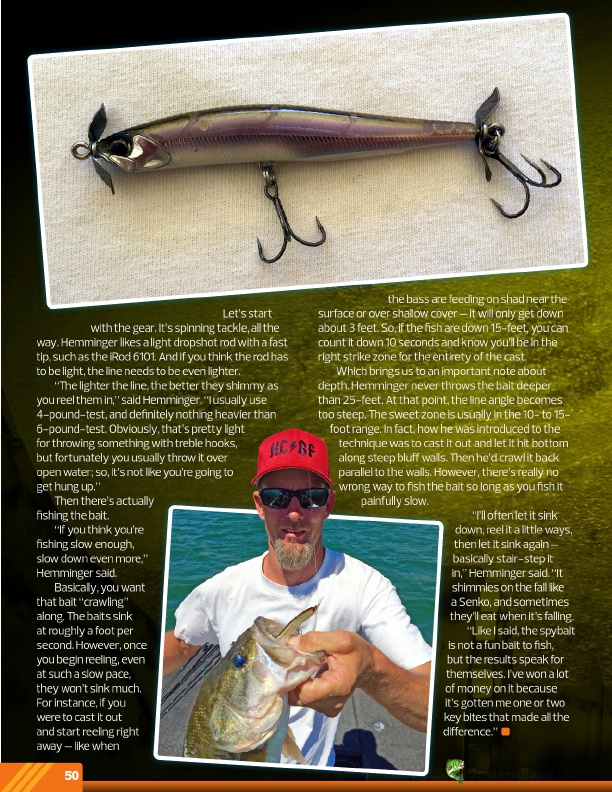
®
Let’s start
with the gear. It’s spinning tackle, all the way. Hemminger likes a light dropshot rod with a fast tip, such as the iRod 6101. And if you think the rod has to be light, the line needs to be even lighter.
“The lighter the line, the better they shimmy as you reel them in,” said Hemminger. “I usually use 4-pound-test, and definitely nothing heavier than 6-pound-test. Obviously, that’s pretty light for throwing something with treble hooks, but fortunately you usually throw it over open water; so, it’s not like you’re going to get hung up.”
Then there’s actually fishing the bait.
“If you think you’re fishing slow enough, slow down even more,” Hemminger said.
Basically, you want that bait “crawling” along. The baits sink at roughly a foot per second. However, once you begin reeling, even at such a slow pace, they won’t sink much. For instance, if you were to cast it out and start reeling right away – like when
50
the bass are feeding on shad near the surface or over shallow cover – it will only get down about 3 feet. So, if the fish are down 15-feet, you can count it down 10 seconds and know you’ll be in the right strike zone for the entirety of the cast.
Which brings us to an important note about depth. Hemminger never throws the bait deeper than 25-feet. At that point, the line angle becomes too steep. The sweet zone is usually in the 10- to 15-
foot range. In fact, how he was introduced to the
technique was to cast it out and let it hit bottom
along steep bluff walls. Then he’d crawl it back
parallel to the walls. However, there’s really no
wrong way to fish the bait so long as you fish it
painfully slow.
“I’ll often let it sink
down, reel it a little ways,
then let it sink again –
basically stair-step it
in,” Hemminger said. “It
shimmies on the fall like
a Senko, and sometimes
they’ll eat when it’s falling.
“Like I said, the spybait
is not a fun bait to fish,
but the results speak for
themselves. I’ve won a lot
of money on it because
it’s gotten me one or two
key bites that made all the
difference.”